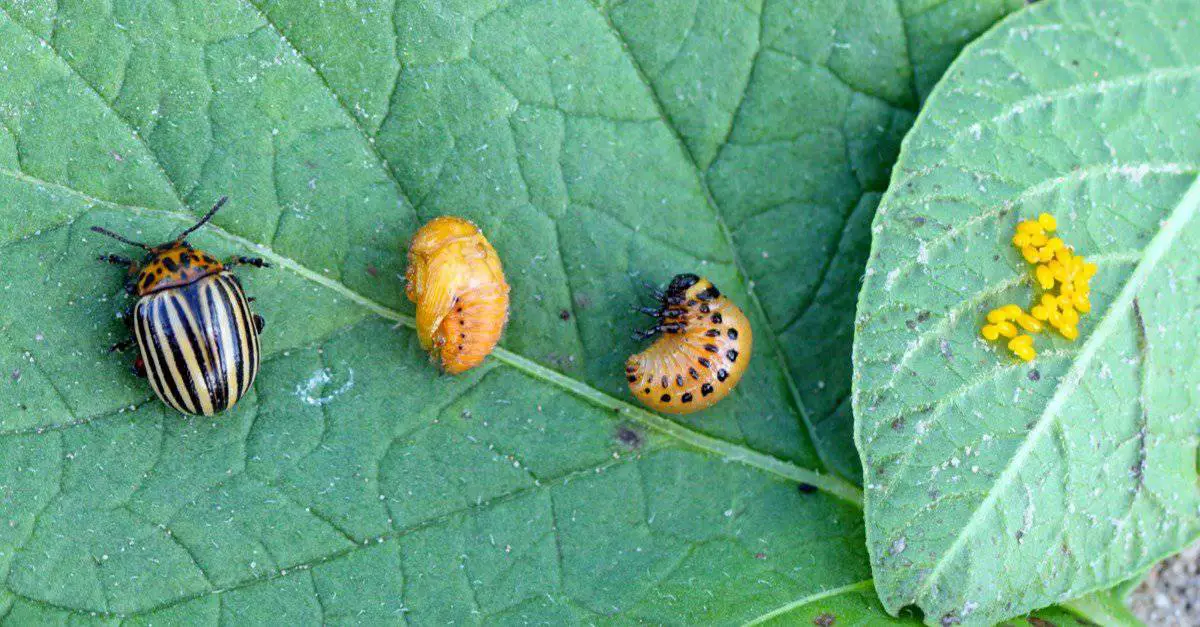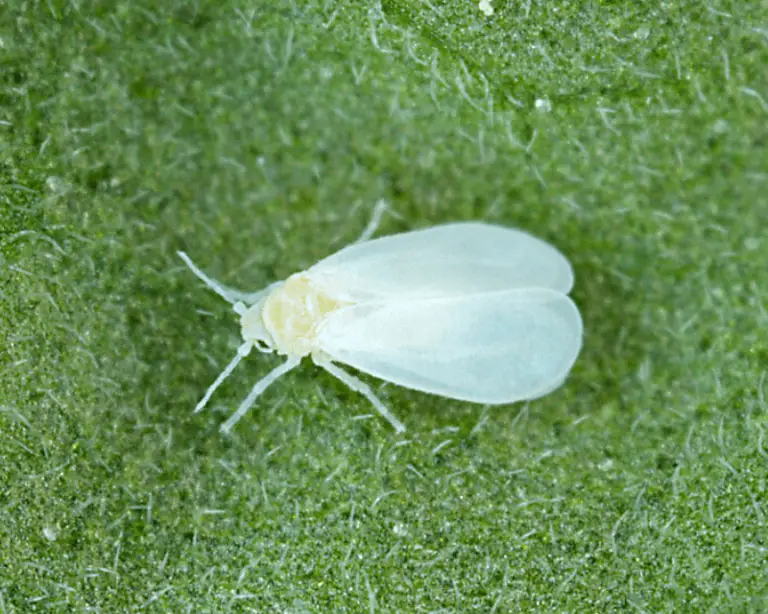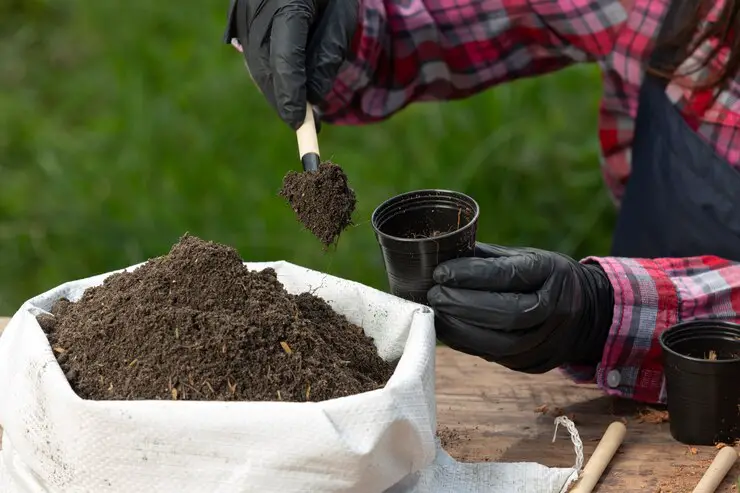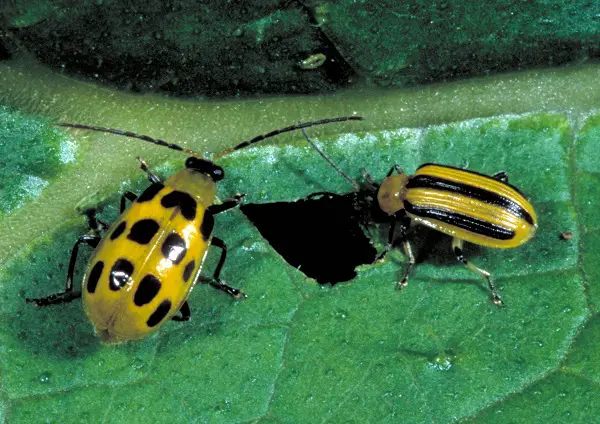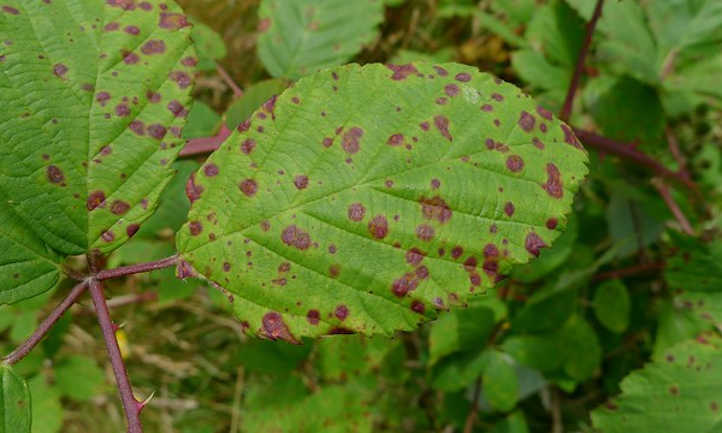The life cycle of cucumber beetles and how to control them
Introduction
Cucumber beetles are one of the most common and destructive pests that can affect cucurbits, such as cucumbers, squash, melons, and pumpkins. These small, yellow and black beetles can cause serious damage to your plants, both by feeding on them and by spreading a deadly disease called bacterial wilt. Bacterial wilt is caused by a bacterium that lives in the gut of the beetles, and that can infect the plants through the beetles’ saliva. Once infected, the plants wilt and die, usually within a few days or weeks. Bacterial wilt is incurable and can wipe out entire crops and cause significant losses for gardeners and farmers.
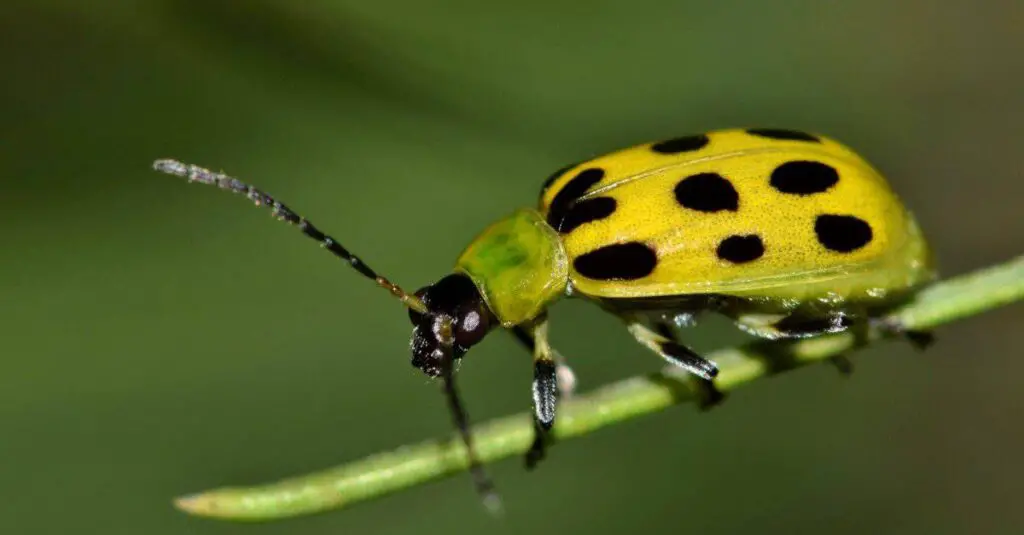
There are two types of cucumber beetles that affect cucurbits: striped cucumber beetles and spotted cucumber beetles. They belong to two genera, Diabrotica and Acalymma, both in the family Chrysomelidae1. They have similar life cycles and behaviors, but they differ in their appearance and geographic distribution. Some of them are more specialized on cucurbits, while others have a broader host range. Some of them are more widespread than others, and some of them are more active at different times of the year.
The main purpose of this article is to show the life cycle of cucumber beetles and how to control them at different stages. You will learn how to identify the beetles and their damage, how to monitor their presence and activity, and how to apply various methods to prevent and reduce their impact on your plants. You will also learn how to use cultural, mechanical, biological, or chemical methods to control the beetles, and what are the pros and cons of each method. By the end of this article, you will have a better understanding of how to deal with these pests and protect your cucurbits from their harm.
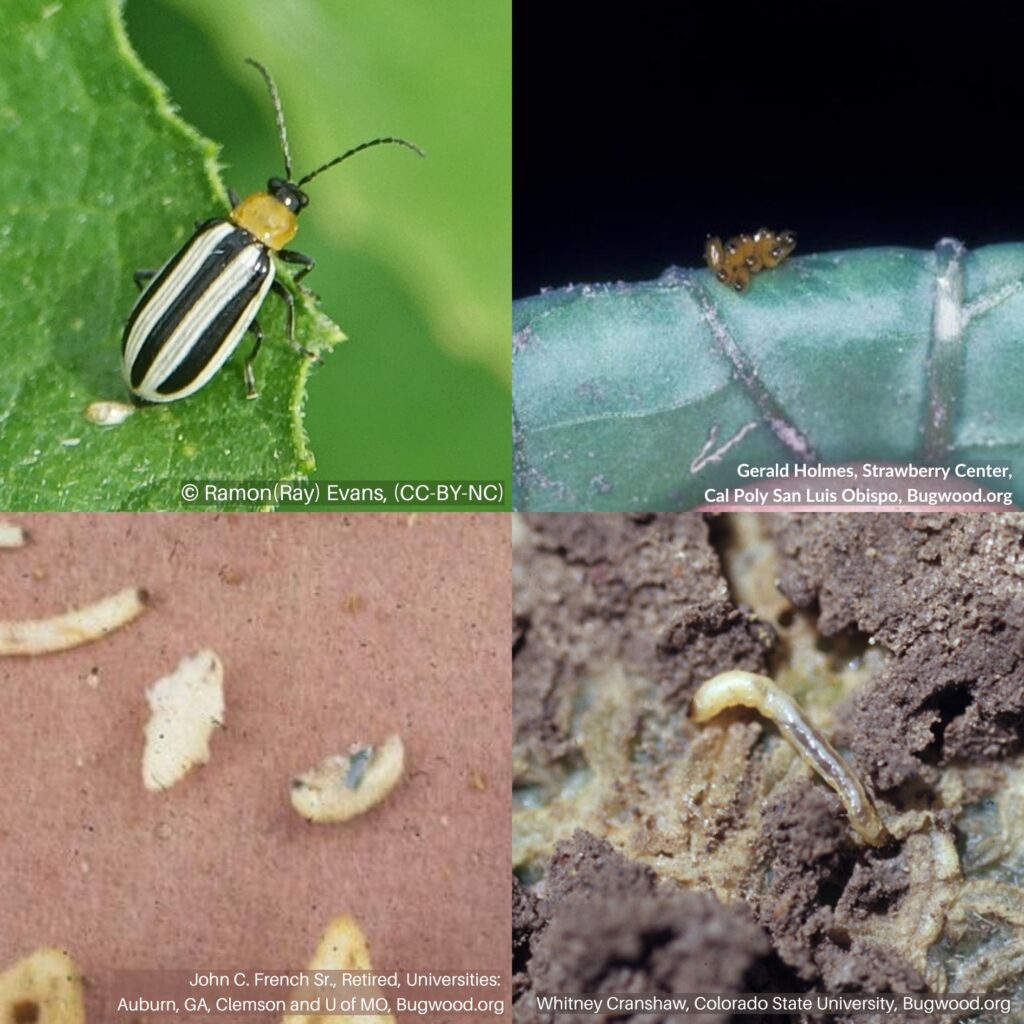
The Egg Stage of Cucumber Beetles
The egg stage is the first stage of the life cycle of cucumber beetles. In this stage, the female beetles lay their eggs in the soil or near the base of the host plants. The eggs hatch into larvae, which feed on the roots and stems of the plants. The larvae then transform into pupae, which emerge as adults later in the summer. The adults feed on the foliage, flowers, and fruits of the plants, and mate and lay eggs again. The cycle repeats until the end of the season, when the adults overwinter in leaf litter or migrate to warmer regions.
In this section, we will describe the appearance, size, color, and number of cucumber beetle eggs, and provide pictures for reference. We will also explain where, when, and how cucumber beetles lay their eggs, and what factors influence their egg-laying behavior. We will also provide tips on how to detect and destroy cucumber beetle eggs, such as inspecting the soil, using traps, or applying insecticides.
Appearance, Size, Color, and Number of Cucumber Beetle Eggs
Cucumber beetle eggs are oval-shaped and slightly flattened. They are pale yellow or orange in color, and measure about 0.03 inches long and 0.02 inches wide2. They are usually laid in clusters of 25 to 50 eggs, but sometimes more or less3. The eggs are often hidden in soil crevices or under plant debris, making them hard to see. However, sometimes they are visible on the surface of the soil or near the base of the host plants.
Here are some pictures of cucumber beetle eggs for reference:
Striped cucumber beetle eggs
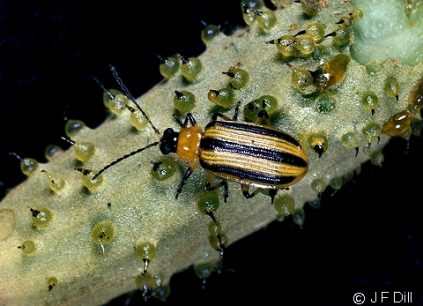
Spotted cucumber beetle eggs
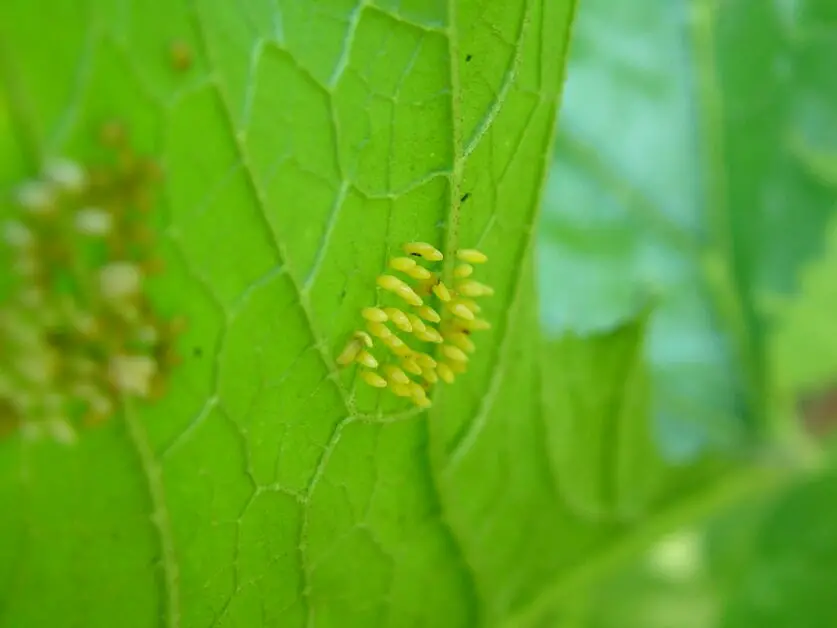
Close-up of cucumber beetle eggs

Where, When, and How Cucumber Beetles Lay Their Eggs
Cucumber beetles lay their eggs in the soil or near the base of the host plants, such as cucumbers, squash, melons, or pumpkins. They prefer moist, sandy, or loamy soils, and avoid clay or heavy soils. They also prefer sunny and warm locations, and avoid shady and cool areas.
Cucumber beetles lay their eggs at different times of the year, depending on the type and the region. Striped cucumber beetles overwinter as adults in leaf litter, and emerge in late May or early June. They feed on the blossoms of early flowering plants, such as dandelions, apples, or hawthorns, until their host crops are available. They then mate and lay eggs in the soil at the base of the host plants. They can lay up to 1500 eggs in their lifetime, and usually lay one or two batches of eggs per season. Spotted cucumber beetles do not overwinter in northern regions, but migrate from the southern U.S. in late June or early July. They feed on a variety of plants, such as corn, beans, or potatoes, until their host crops are available. They then mate and lay eggs on non-cucurbit plants, such as corn or other grasses. They can lay up to 2000 eggs in their lifetime, and usually lay several batches of eggs per season.
Cucumber beetles lay their eggs by inserting their ovipositors (egg-laying organs) into the soil or near the base of the host plants. They usually lay their eggs in the morning or evening, when the temperature is moderate and the humidity is high. They are influenced by several factors, such as the availability and quality of the host plants, the presence and density of the beetles, the weather conditions, and the natural enemies. They tend to lay more eggs when the host plants are abundant and healthy, when the beetles are numerous and crowded, when the temperature is warm and the rainfall is adequate, and when the predators and parasitoids are scarce.
How to Detect and Destroy Cucumber Beetle Eggs
Detecting and destroying cucumber beetle eggs can be challenging, as they are often hidden in the soil or under plant debris. However, there are some tips that can help you find and eliminate them, such as inspecting the soil, using traps, or applying insecticides.
Inspecting the soil is the most direct and reliable way to detect cucumber beetle eggs. You can use a hand trowel or a shovel to dig up the soil around the base of the host plants, and look for the pale yellow or orange eggs in clusters. You can also use a magnifying glass or a microscope to examine the soil samples more closely. You should inspect the soil regularly and thoroughly, especially in the early stages of the plant growth, when the beetles are most active and the plants are most vulnerable.
Using traps is another way to detect cucumber beetle eggs. You can use yellow sticky traps or yellow cup traps to capture and kill the adult beetles in your garden. These traps attract the beetles by their yellow color, which mimics the color of the host plants. You can place the traps near the plants, off the ground, and check them regularly. By counting the number and type of the beetles on the traps, you can estimate the population and the activity of the beetles in your garden. You can also use the traps to monitor the effectiveness of your control methods, such as insecticides or biological agents.
Applying insecticides is a way to destroy cucumber beetle eggs. You can use synthetic or natural insecticides to kill the eggs in the soil or near the base of the host plants. You can apply insecticides by spraying, dusting, or granulating them. You can use insecticides to control all types of cucumber beetles, as they can kill the eggs at different stages. However, you should use insecticides with caution, as they can also kill the beneficial insects, such as pollinators and predators, and they can leave residues on your plants and soil that may affect your health and the environment. You should also follow the label instructions and the safety precautions when using insecticides, and avoid applying them when the plants are in bloom or when the wind is strong.
Some examples of insecticides that can be used to destroy cucumber beetle eggs are:
- Carbaryl: A synthetic insecticide that can kill the eggs by contact or ingestion. It can be applied as a spray or a dust. It is effective against all types of cucumber beetles, but it can also harm the beneficial insects and the environment. It can also cause resistance or resurgence of the beetles, if used excessively or improperly.
- Neem oil: A natural insecticide that can kill the eggs by contact or ingestion. It can be applied as a spray or a dust. It is effective against some types of cucumber beetles, such as cucumber beetles and spotted cucumber beetles, but it can also repel the beneficial insects and the pollinators. It can also wear off over time or be washed away by rain.
- Imidacloprid: A synthetic insecticide that can kill the eggs by systemic action. It can be applied as a spray, a drench, or an injection. It is effective against some types of cucumber beetles, such as striped cucumber beetles, but it can also harm the beneficial insects and the environment. It can also cause resistance or resurgence of the beetles, if used excessively or improperly.
The Larva Stage of Cucumber Beetles
Cucumber beetles are common pests of cucurbits (such as cucumbers, squashes, and melons) and other garden crops. They can cause direct damage by feeding on the foliage, stems, and fruits, as well as indirect damage by transmitting bacterial wilt and cucumber mosaic virus. The larva stage of cucumber beetles is often overlooked, but it can also affect the health and yield of the plants. In this section, we will describe the appearance, behavior, and management of cucumber beetle larvae.
Appearance, Size, Color, and Number of Cucumber Beetle Larvae
The larvae of cucumber beetles are about 9mm in length, with creamy white coloration. They have dark heads with three pairs of legs. You’ll rarely see the larvae as they eat at the plant under the soil1. But if you see adults, you probably have some cucumber beetle larvae eating the host plant. The larvae of the striped cucumber beetle ( Acalymma vittatum) and the spotted cucumber beetle ( Diabrotica undecimpunctata) are similar in appearance, but they differ in their host preferences and life cycles. The larva of the spotted cucumber beetle is also known as the corn rootworm and can be a severe problem for corn and other agricultural crops2. Here are some pictures of cucumber beetle larvae for reference:
Striped cucumber beetle larva
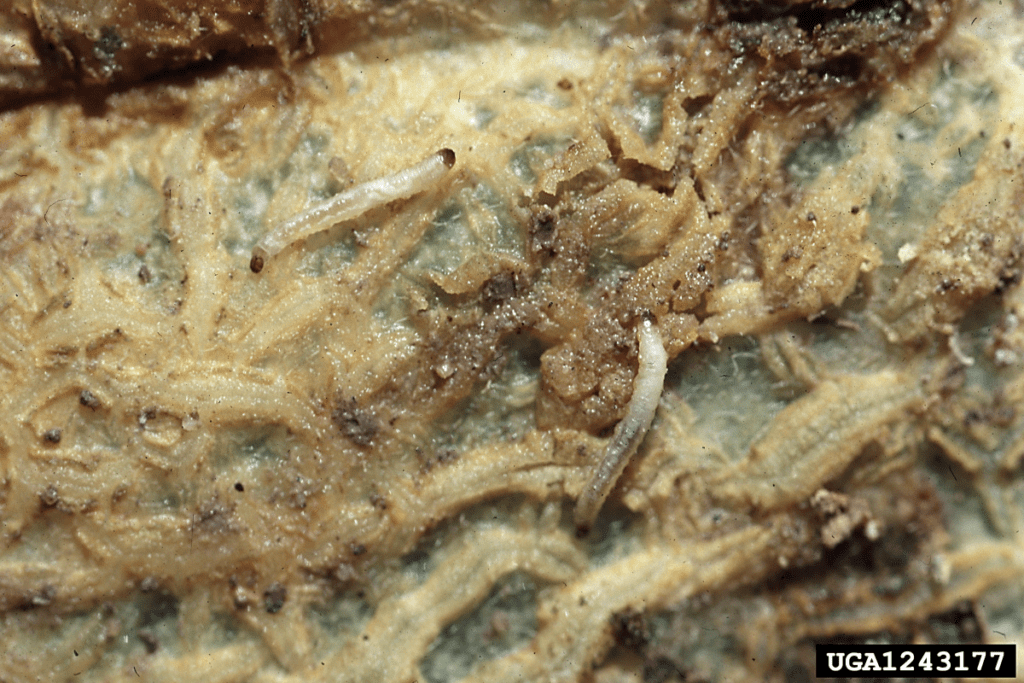
Spotted cucumber beetle larva
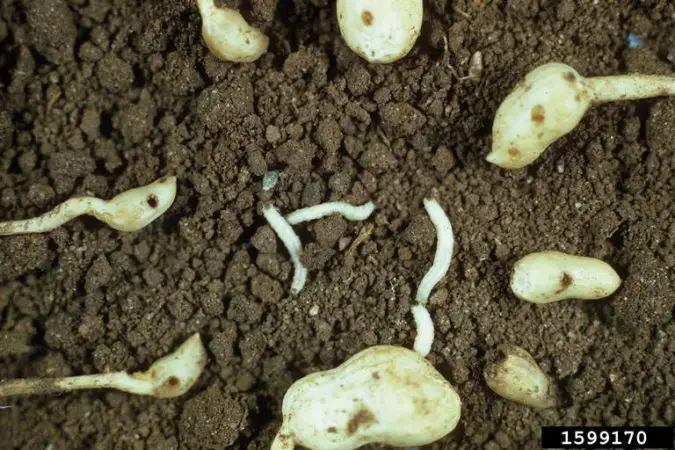
Where, When, and How Cucumber Beetle Larvae Hatch, Feed, and Grow
Cucumber beetle larvae hatch from eggs that are laid by the adult females in the soil near the base of the host plants. The eggs are pale orange-yellow and are laid in groups. The hatching time depends on the temperature and moisture of the soil, but it usually takes several weeks. The larvae then burrow into the soil and feed on the roots and underground parts of the stems of the host plants. The feeding damage can reduce the plant’s ability to absorb water and nutrients, and weaken the plant’s resistance to diseases and drought.
The larvae grow through a series of stages called instars, and there are 3-4 of them for most species. The duration of each instar also depends on the environmental conditions, but it usually takes a few weeks. The larvae then transform to pupae in the soil and emerge later as adults. The entire life cycle of the insect is about 8 weeks. Southern climates may see three full generations of cucumber beetles in a single growing season, while northern climates typically see only two.
The development of cucumber beetle larvae is influenced by several factors, such as the availability and quality of the host plants, the presence of natural enemies, and the weather conditions. Some of the factors that can enhance the larval development are:
- High soil moisture and organic matter, which provide favorable conditions for egg laying and larval survival.
- Warm soil temperatures, which speed up the egg hatching and larval growth.
- Abundant and succulent cucurbit roots, which provide a rich food source for the larvae.
- Lack of predators and parasitoids, which can reduce the larval population.
Tips on How to Prevent and Reduce Cucumber Beetle Larval Damage
The best way to prevent and reduce cucumber beetle larval damage is to control the adult beetles, since they are the ones that lay the eggs and transmit the diseases. Some of the methods that can be used to control the adult beetles are:
- Protect young cucurbit seedlings from cucumber beetles by covering them right after planting with floating row covers, individual screens, or cones.
- Try planting cucurbits later in the season, when the adult beetles are less active and abundant.
- Use resistant or tolerant varieties of cucurbits, such as butternut squash, which can withstand some feeding damage and bacterial wilt.
- Remove weeds and crop residues that can harbor the adult beetles and provide alternative food sources.
- Apply insecticides when the adult beetles are present and causing significant damage, following the label instructions and safety precautions.
In addition to controlling the adult beetles, some of the methods that can be used to control the larval stage are:
- Cultivate the soil before planting and after harvest, to expose and destroy the eggs and larvae.
- Apply beneficial nematodes to the soil, which can infect and kill the larvae.
- Rotate crops with non-host plants, such as legumes, brassicas, or grains, to disrupt the life cycle of the beetles.
By following these tips, you can prevent and reduce cucumber beetle larval damage and protect your cucurbit plants from these pests.
The Pupa Stage of Cucumber Beetles
Cucumber beetles are common pests of cucurbits (such as cucumbers, squashes, and melons) and other garden crops. They can cause direct damage by feeding on the foliage, stems, and fruits, as well as indirect damage by transmitting bacterial wilt and cucumber mosaic virus. The pupa stage of cucumber beetles is the transitional stage between the larva and the adult. In this section, we will describe the appearance, behavior, and management of cucumber beetle pupae.
Appearance, Size, Color, and Number of Cucumber Beetle Pupae
The pupae of cucumber beetles are found in the soil, near the base of their host plants. Pupae are white, eight to 10 mm in length, with a broad shape anteriorly and tapering to a narrow point at the distal end of the abdomen. As they develop and start to look more like adults, their color changes to yellow. They also have stout spines on the tip of their abdomens and tiny spines on the dorsal side of the abdominal segments. The pupae of the striped cucumber beetle ( Acalymma vittatum) and the spotted cucumber beetle ( Diabrotica undecimpunctata) are similar in appearance, but they differ in their host preferences and life cycles. The pupa of the spotted cucumber beetle is also known as the corn rootworm pupa and can be a severe problem for corn and other agricultural crops. Here is picture of cucumber beetle pupae for reference:
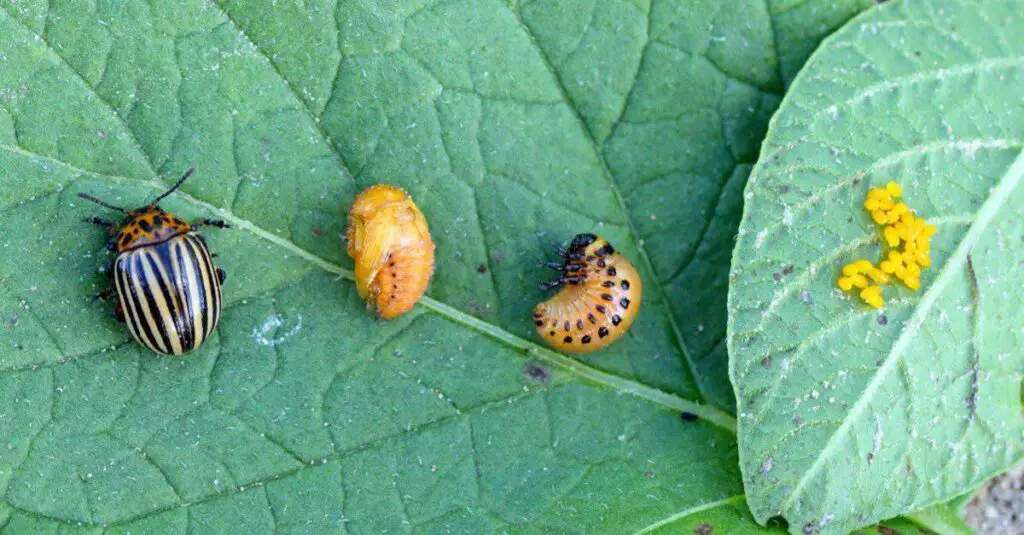
Where, When, and How Cucumber Beetle Larvae Transform into Pupae
Cucumber beetle larvae transform into pupae in the soil, after completing their feeding and growth stages. The pupation time depends on the temperature and moisture of the soil, but it usually takes a few weeks. The larvae of the striped cucumber beetle pupate in late June or early July, and emerge later in the summer as adults. The larvae of the spotted cucumber beetle pupate in late July or early August, and emerge later in the fall as adults. The pupae do not feed or move, but they are sensitive to light and vibration. They can respond to stimuli by twitching their abdominal segments3.
The pupation of cucumber beetle larvae is influenced by several factors, such as the availability and quality of the host plants, the presence of natural enemies, and the weather conditions. Some of the factors that can enhance the pupal development are:
- High soil moisture and organic matter, which provide favorable conditions for pupation.
- Warm soil temperatures, which speed up the pupal emergence.
- Abundant and succulent cucurbit roots, which provide a rich food source for the larvae before pupation.
- Lack of predators and parasitoids, which can reduce the pupal mortality.
Tips on How to Locate and Eliminate Cucumber Beetle Pupae
The best way to locate and eliminate cucumber beetle pupae is to target the adult beetles, since they are the ones that lay the eggs and transmit the diseases. Some of the methods that can be used to locate and eliminate the adult beetles are:
- Protect young cucurbit seedlings from cucumber beetles by covering them right after planting with floating row covers, individual screens, or cones.
- Try planting cucurbits later in the season, when the adult beetles are less active and abundant.
- Use resistant or tolerant varieties of cucurbits, such as butternut squash, which can withstand some feeding damage and bacterial wilt.
- Remove weeds and crop residues that can harbor the adult beetles and provide alternative food sources.
- Apply insecticides when the adult beetles are present and causing significant damage, following the label instructions and safety precautions.
In addition to targeting the adult beetles, some of the methods that can be used to locate and eliminate the pupal stage are:
- Dig the soil around the base of the host plants, to expose and destroy the pupae.
- Use yellow sticky traps, to capture the emerging adults before they can mate and lay eggs.
- Apply beneficial nematodes to the soil, which can infect and kill the pupae.
- Rotate crops with non-host plants, such as legumes, brassicas, or grains, to disrupt the life cycle of the beetles1.
By following these tips, you can locate and eliminate cucumber beetle pupae and protect your cucurbit plants from these pests.
The Adult Stage of Cucumber Beetles
Cucumber beetles are common pests of cucurbit crops, such as cucumbers, squash, melons, and pumpkins. They can cause direct damage to the plants by feeding on the leaves, stems, flowers, and fruits, as well as indirect damage by transmitting bacterial wilt and cucumber mosaic virus. There are two main types of cucumber beetles: the striped cucumber beetle (Acalymma vittatum) and the spotted cucumber beetle (Diabrotica undecimpunctata). In this article, we will focus on the adult stage of these beetles, and how to identify, monitor, and manage them.
Appearance, Size, Color, and Pattern of Cucumber Beetle Adults
Adult cucumber beetles are small, oval-shaped beetles, about 1/4 inch long. They have a black head and antennae, and yellow-green wing covers. The striped cucumber beetle has three black stripes along its back, while the spotted cucumber beetle has 12 black spots on its back. The larvae are worm-like, white, and dark-headed, and have three pairs of legs on the thorax. The following pictures show the difference between the two types of beetles:
Striped cucumber beetle

Spotted cucumber beetle

Where, When, and How Cucumber Beetle Pupae Emerge as Adults
Cucumber beetles have a complete life cycle, which means they go through four stages: egg, larva, pupa, and adult. The adult beetles overwinter in plant debris, weeds, or woody areas, and become active in spring, when the temperature reaches about 70°F. They fly to the cucurbit fields and feed on the young plants, and mate and lay eggs in the soil near the plant bases. The eggs hatch in 14 to 21 days, and the larvae feed on the roots and underground parts of the stems for 3 to 6 weeks. The larvae then pupate in the soil, and emerge as adults in midsummer. The new generation of adults feed on the aboveground parts of the plants, and may migrate to other crops or plants. There are 2 to 3 generations of cucumber beetles per year, depending on the climate and the availability of host plants.
The emergence of cucumber beetle adults is influenced by several factors, such as temperature, day length, humidity, and food quality. Higher temperatures and longer days can speed up the development and activity of the beetles, while lower temperatures and shorter days can slow them down or induce diapause (a state of dormancy). Higher humidity and better food quality can also enhance the survival and reproduction of the beetles, while lower humidity and poorer food quality can reduce them.
How to Monitor and Manage Cucumber Beetle Adults
Monitoring and managing cucumber beetle adults is important to prevent or reduce the damage they cause to the cucurbit crops. There are several methods that can be used to monitor and manage these beetles, such as:
- Use yellow sticky traps to catch cucumber beetles and other pests. Place the traps near the cucurbit plants, and check them regularly. The number of beetles caught can indicate the level of infestation and the need for control measures.
- Use row covers to protect seedlings and new plantings from cucumber beetles. Row covers are sheets of fabric or plastic that cover the plants and exclude the beetles. They also provide extra heat and moisture to the plants. However, they should be removed during flowering to allow pollination.
- Use trap crops to attract beetles away from the main crop. Trap crops are plants that are more preferred by the beetles than the main crop, and can be planted around the perimeter or within the field. For example, Cucurbita maxima varieties, such as buttercup and hubbard squashes and giant pumpkins, are more attractive to cucumber beetles than Cucurbita pepo or Cucurbita moschata varieties, such as pumpkins, summer squash, butternut squash, and other winter squash. The trap crops should be sprayed with insecticides or removed and destroyed when they are infested with beetles, to prevent them from spreading to the main crop.
- Use biological control agents to reduce the population of cucumber beetles. Biological control agents are natural enemies of the beetles, such as predators, parasitoids, or pathogens. For example, some species of lady beetles, lacewings, and spiders can prey on cucumber beetles, while some species of tachinid flies and braconid wasps can parasitize them. Some fungi, bacteria, and nematodes can also infect and kill cucumber beetles. These biological control agents can be introduced or conserved in the field by providing them with suitable habitats, such as flowering plants, mulches, or cover crops.
- Use insecticides to kill cucumber beetles. Insecticides are chemicals that can kill or repel insects, and can be applied to the plants or the soil. However, insecticides should be used as a last resort, as they can also harm beneficial insects, pollinators, and the environment. They should be used only when the beetle population exceeds the economic threshold, which is the level of infestation that causes more damage than the cost of control. They should also be used according to the label instructions, and with proper safety precautions. Some examples of insecticides that can be used against cucumber beetles are carbaryl, permethrin, pyrethrins, and neem oil.
Conclusion
Cucumber beetles are destructive pests that can cause serious damage to cucurbit crops, such as cucumbers, squash, melons, and pumpkins. They can feed on the leaves, stems, flowers, and fruits of the plants, and transmit bacterial wilt and cucumber mosaic virus. They have four stages in their life cycle: egg, larva, pupa, and adult. Each stage requires different methods of control, such as using row covers, trap crops, biological control agents, or insecticides. By monitoring and managing cucumber beetles at different stages, you can protect your cucurbit plants and enjoy a bountiful harvest.
We hope you learned something new from this article, and we invite you to try the methods we suggested and share your feedback or questions with us. If you liked this article, please subscribe to our blog, follow us on social media, and check out our other related articles on pest management. Thank you for reading, and happy gardening! 😊.

Suyash Dhoot, editor at SouthElMonteHydroponics.com, is a pioneering force in hydroponics. His expertise spans nutrient solutions and cutting-edge technology. Through meticulous editing, he elevates the site to a beacon of knowledge, offering invaluable insights. Dhoot’s dedication shapes a greener, more efficient future for agriculture.

